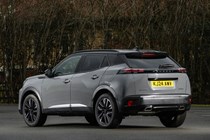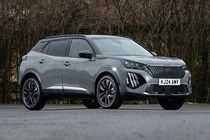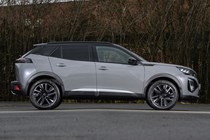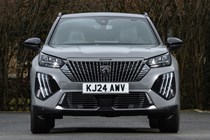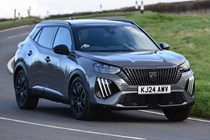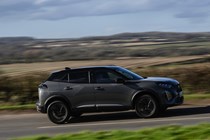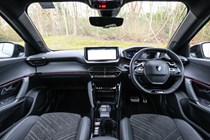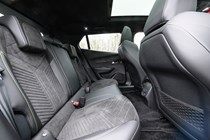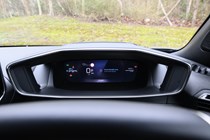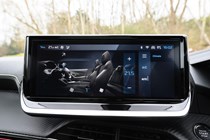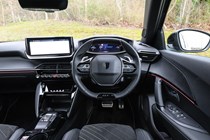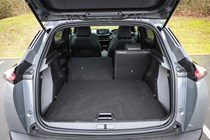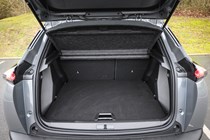
Peugeot 2008 engines, drive and performance
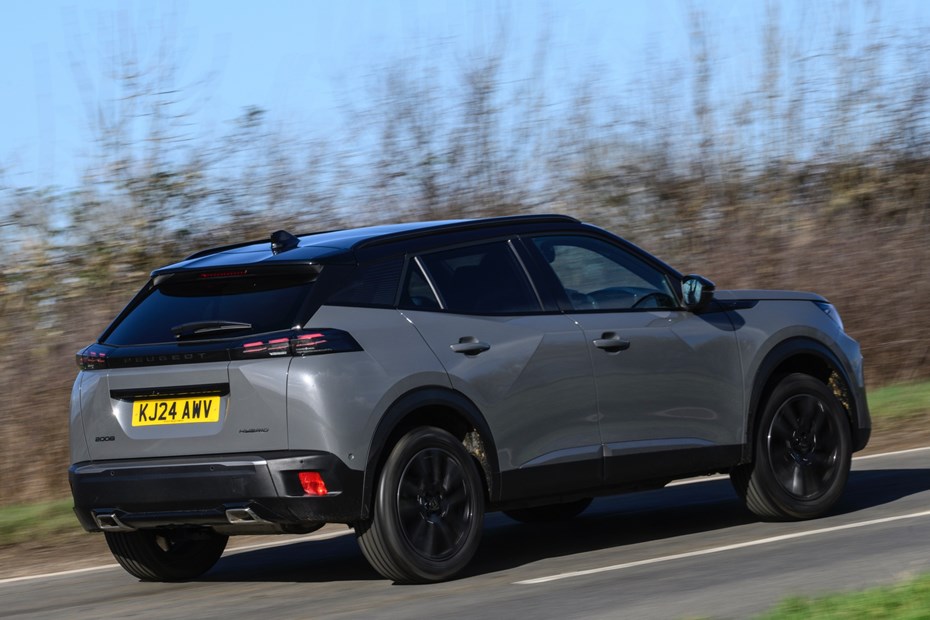
- Strong line-up of engines
- Manual or automatic gearboxes available
- Not a weak powertrain in the range
Petrol engines
The bulk of the engine range is similar to the 2008’s smaller 208 sibling. It kicks off with a 130hp 1.2-litre Puretech engine, which is paired to a six-speed manual gearbox only. In reality it’s all you really need. The 130hp engine is quiet unless really stretched, and the presence of a sixth gear means it’s relaxed at higher speeds. Even the now discontinued 100hp version of this engine is sufficient in most situations.
The 130hp engine is also available with Peugeot’s eight-speed automatic gearbox, which we think is one of the finest self-shifters in the class. It’s quick to shift, rarely gets caught in the wrong ratio and has an ultra-long top gear – so at motorway speeds the engine’s barely ticking over at 2,000rpm. It’s only 0.2 seconds slower to 62mph than the manual model, too, so we didn’t really notice any difference. Our only gripe is that it can be a little jerky when pulling away or manoeuvring.
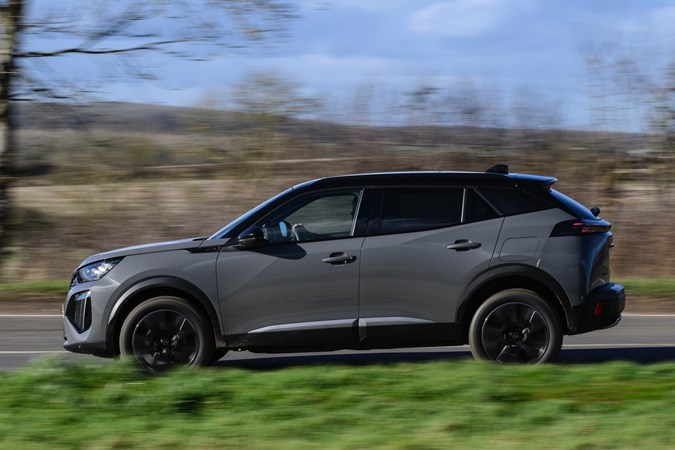
This automatic gearbox came as standard with the range-topping engine of the pre-facelift 2008, which was a 155hp version of the same 1.2-litre Puretech petrol. As with the other choices, it’s perky, refined and nice to drive – but we think it’s overkill for this kind of car, and was only available in range-topping GT Premium trim.
Diesel engines
There was a sole 110hp diesel – a 1.5-litre BlueHDi unit that’s also used in the 208. It’s paired exclusively to the six-speed manual gearbox. This has been discontinued due to ever falling demand.
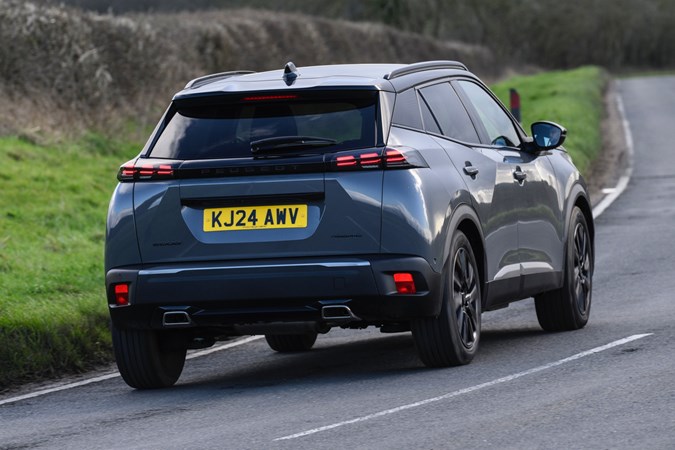
If you’re desperate for a diesel engine it’s not a dreadful choice, but we think the slight fuel economy penalty you’d get opting for the petrols is worth it, because they’re just so much more pleasant to drive. The diesel is refined and punchy for its size, but unnecessary when the other options are so good.
Hybrid engines
After the death of diesel, it’s the Hybrid 136 that’s the most efficient option. It pairs a 136hp version of the 1.2 Puretech turbo petrol to a six-speed automatic gearbox with an integrated electric motor. It recovers energy when you slow down to feed a small battery pack that can power the 2008 for short distances on light throttle openings.
The electric motor can also augment the petrol engine and drops the 0-62mph time to 8.3 seconds. It feels pleasantly punchy and is usually smooth, but can occasionally be jerky when changing gear or power source. It’s the priciest petrol-fuelled option although the performance and potential economy improvement makes it worth considering, especially if you want or need an auto.
What’s it like to drive?
- Ride is firm on UK roads
- Handles well with good body control
- Steering feels over-light at times
Peugeot’s fitted its i-Cockpit dashboard to the 2008, endowing it with a tiny steering wheel that makes it feel quite darty at town speeds.
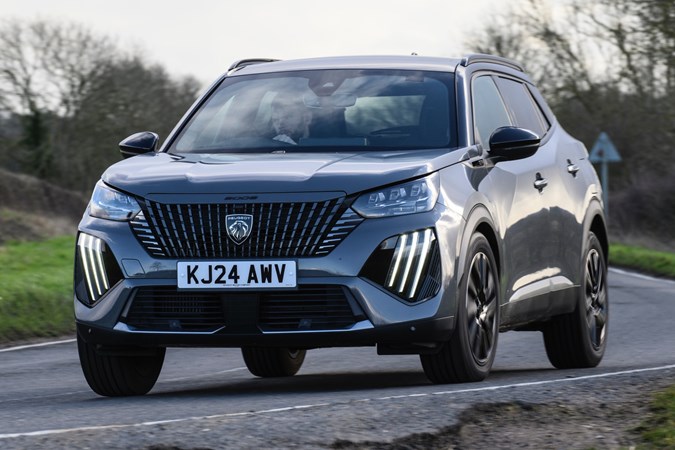
This does translate to some vagueness on faster roads, though it’s never a very big issue. A Volkswagen T-Cross is very slightly more stable on a long motorway cruise, albeit without the 2008’s agility.
The 2008 does have a satisfying chassis, though, and it’s one of the more pleasing small crossovers to drive. Most of the time it’s light and easy, but press on and you can have a bit of fun with good grip levels and plenty of control. However, if you want a good time you’re better off with a Ford Puma.
On UK roads, though, there’s a firm edge to the ride that’s especially prevalent on higher-specification cars with their larger wheels. It’s never truly uncomfortable, but it’s not as soft and pliant as, say, a Skoda Kamiq or DS 3.

We’ve tried cars with both 17- and 18-inch wheels, and there’s a noticeable difference in ride quality. The bigger diameter rims amplify every crest and dip in the road, and bumpy sections can be quite jarring as your hips shake and head tosses. Accelerating over sharp ridges can cause the front wheels to skip rather than remaining glued into the surface as well, lending a more fidgety feel.
This is also true of the 17-inch wheels, but less often. The ride remains tight but that underlying jagged edge melts away, leaving a setup that keen drivers will appreciate.



